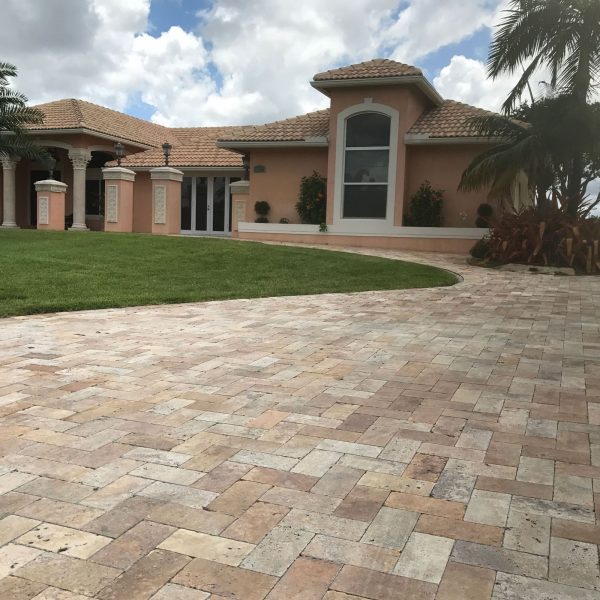Travertine pavers are a popular choice for patios, pool decks, walkways, and driveways thanks to their timeless beauty, natural durability, and slip-resistant surface. One of the most common questions homeowners ask when planning an installation is: Do travertine pavers need a concrete base? The answer depends on your project’s location, intended use, and desired look.
Travertine Pavers Can Be Installed Two Ways
Travertine pavers are versatile and can be laid using two main installation methods:
-
On a concrete base (mortared installation)
-
On a compacted sand or gravel base (dry-set installation)
Each method has its benefits and is better suited for certain situations.
When a Concrete Base is Recommended
A concrete base provides a solid, permanent foundation. This method is best when:
-
High-traffic areas need maximum stability (driveways, commercial walkways).
-
The ground has poor drainage and a sand base could shift.
-
You want a completely rigid installation that resists settling.
-
Local building codes require a hard base for certain applications.
Pros:
-
Very stable and long-lasting
-
Minimizes shifting or settling
-
Works well in areas with heavy loads
Cons:
-
Higher installation cost
-
Less flexibility if ground movement occurs (can crack)
-
More labor-intensive
When a Sand or Gravel Base is Better
Dry-set installation involves placing travertine pavers on a compacted base of gravel and sand. This is a preferred option for many patios, pool decks, and garden paths.
Advantages:
-
Better water drainage — ideal for pool areas and regions with heavy rainfall
-
Easier to repair or replace individual pavers
-
More forgiving if the ground shifts slightly
-
Lower cost compared to concrete base installations
Best for:
-
Pool decks and patios
-
Walkways and garden paths
-
Areas with good soil stability
Key Factors to Consider
Before choosing your base, consider these factors:
-
Climate: Freeze-thaw cycles can cause concrete bases to crack; a sand base can handle ground movement better.
-
Load: Heavy vehicles or frequent high traffic often require the strength of concrete.
-
Budget: Concrete bases are more expensive due to materials and labor.
-
Drainage: Sand bases allow for faster water runoff, reducing slip hazards and standing water.
Final Verdict – Do travertine pavers need a concrete base?
Travertine pavers do not always need a concrete base — many beautiful, long-lasting installations are done with a sand and gravel foundation. However, for driveways, commercial spaces, or areas with unstable soil, a concrete base may be the better choice.
The right foundation ensures your travertine pavers remain secure, level, and beautiful for decades. Consulting with an experienced installer will help determine the best base for your specific project.

